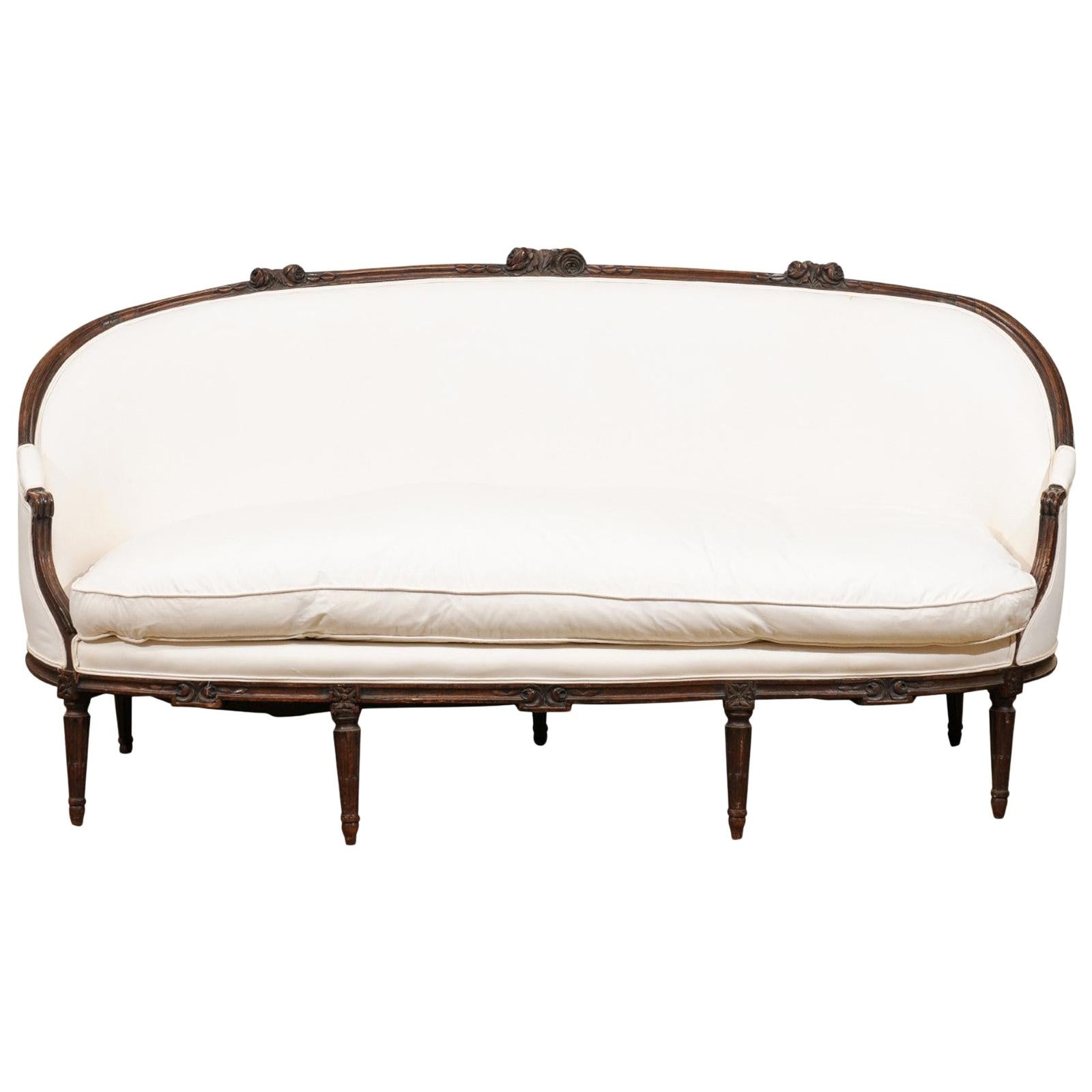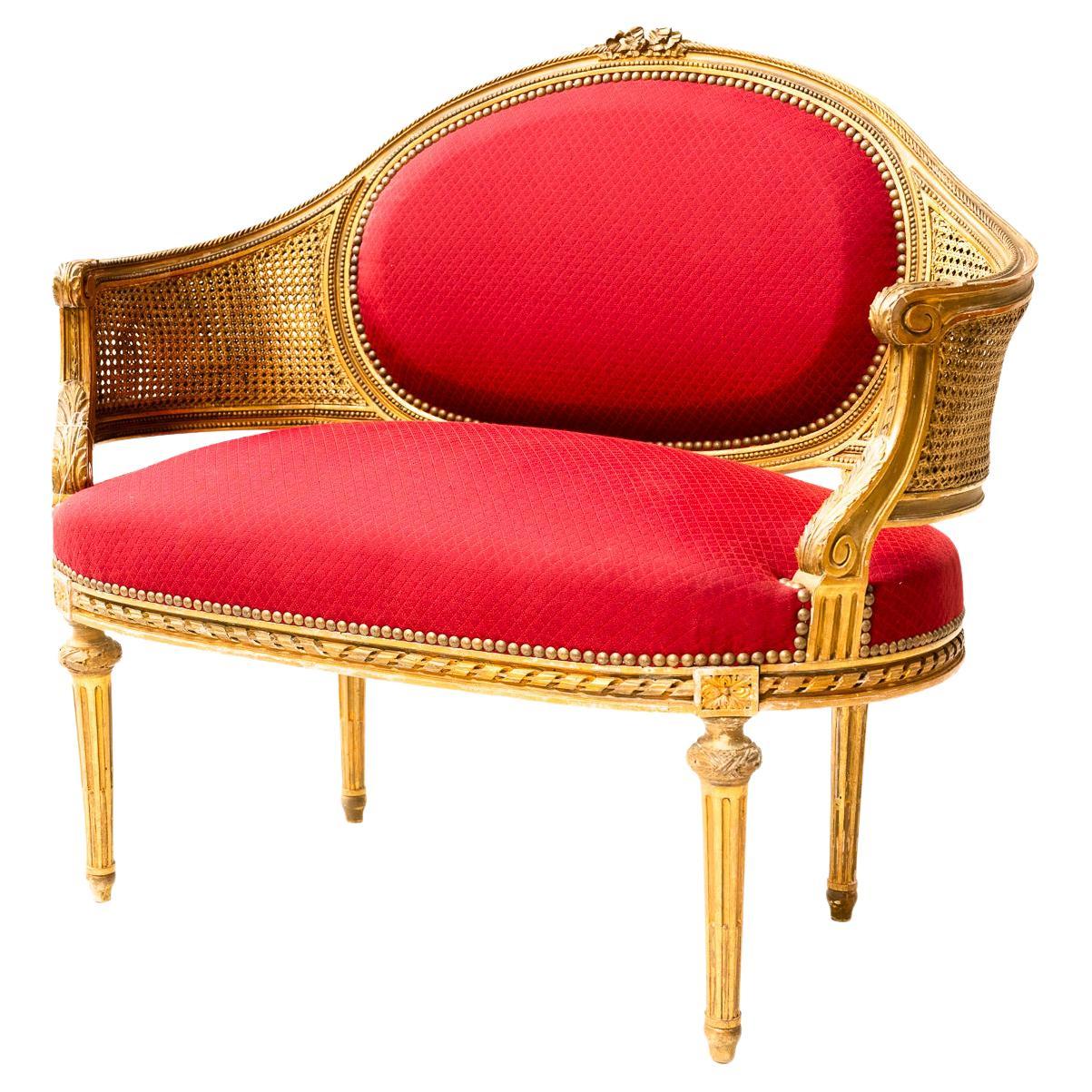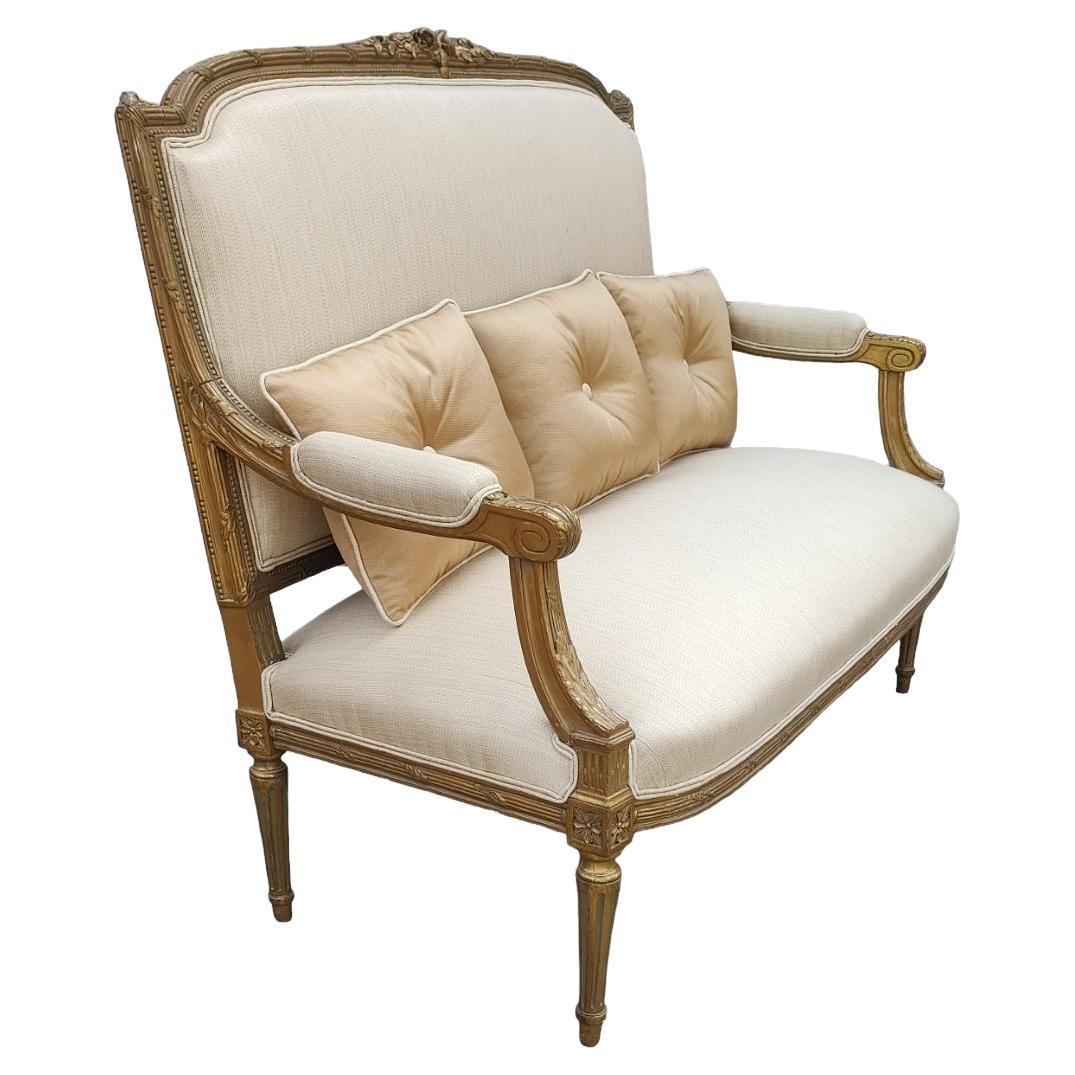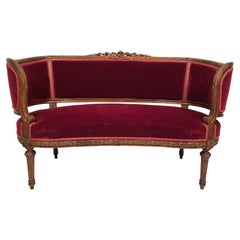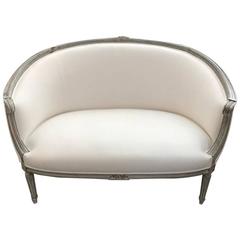
French Louis XVI Style Corbeille Canapé, Circa 1880
View Similar Items
1 of 10
French Louis XVI Style Corbeille Canapé, Circa 1880
About the Item
- Dimensions:Height: 34.26 in (87 cm)Width: 50.4 in (128 cm)Depth: 28.35 in (72 cm)
- Style:Louis XVI (In the Style Of)
- Materials and Techniques:
- Place of Origin:
- Period:
- Date of Manufacture:circa 1880
- Condition:Wear consistent with age and use.
- Seller Location:Madrid, ES
- Reference Number:1stDibs: LU211737181773
You May Also Like
- Petit canapé corbeille de style Louis XVILocated in ROYÈRE-DE-VASSIVIÈRE, FRPetit canapé corbeille de style Louis XVI Bois naturel richement sculpté Garniture de velours bordeaux, finition galon Très bon état général Dimension...Category
Antique Late 19th Century French Louis XVI Canapes
MaterialsVelvet, Wood
- French 1780s Louis XVI Period Walnut Canapé en CorbeilleLocated in Atlanta, GAA French Louis XVI period carved walnut canapé en corbeille from the late 18th century, with carved roses and upholstery. Created in France during the last quarter of the 18th centur...Category
Antique Late 18th Century French Louis XVI Canapes
MaterialsUpholstery, Walnut
- French Louis XVI Style 19th Century Giltwood Upholstered Canapé en CorbeilleLocated in Atlanta, GAA French Louis XVI style giltwood canapé en corbeille from the 19th century, with carved flowers and new upholstery. Created in France during the 1...Category
Antique 19th Century French Louis XVI Canapes
MaterialsUpholstery, Giltwood
- Louis XVI Style Canapé Upholstered with Aubusson Tapestry, circa 1880By Aubusson ManufactureLocated in Brighton, West SussexA Louis XVI style Canapé, upholstered with Aubusson tapestry depicting a scene from Aesop’s Fables. French, circa 1880. The small town of Aubusson, on the River Creuse in France, had a long history of producing elaborate and costly tapestries. They were known for their elegance and delicate colouring and often depicted romantic pastoral scenes derived from artists such as Boucher; historic scenes, inspired by classical mythology; or more formalized architectural vistas. Aubusson was particularly noted for its finely balanced compositions of garlands and bouquets which became famous and sought after throughout Europe. Aesop was by tradition a labourer who was a contemporary of Croesus and Peisistratus in the mid-sixth century BC in Ancient Greece. The various collections that go under the rubric "Aesop's Fables" are still taught as moral lessons and for centuries have been influential subject matter for artistic endeavour. The Shepherd Boy and the Wolf: In a village was a young boy who had a job watching the village's sheep. Two times he called out, "Wolf! Wolf!" Each time the villagers came running to help the boy. And both times the boy just laughed at the villagers and called them names. But then the wolf really did come and start eating the sheep. The boy called, "Wolf! Wolf!" but the villagers just ignored his calls. They thought he was just trying to trick them again. The wolf took his time and had a huge meal of the entire flock of sheep. The Wolf in Sheep's Clothing: Once upon a time there was a wolf who decided to disguise himself so he could get some food without working too hard. He took a sheep's skin and hung it over his body. Then he went into the sheep pasture and pretended to graze with the sheep. He fooled everyone. Even the shepherd didn't realize she had a wolf grazing with her sheep. Soon the shepherd moved the sheep into the barn and the wolf went with them. The barn door was closed and locked and the wolf was just about ready to have a nice meal when the shepherd came back. She decided she wanted some food for her meal. She grabbed the wolf who was still disguised as a sheep and killed him for her meal. The Wolf and the Crane: One day a wolf had a bone stuck in his throat. He called to a crane and hired him for a large sum of money to put her head in his mouth and remove the bone. The crane did as she was hired to do and got the bone out and then asked to be paid. The wolf just grinned and said, "Ha! You've already been paid. I let you take your head safely out of my mouth when I could have crushed you with my powerful jaws”. The Wolf and a Mountain Goat: One day a wolf looked up and saw a mountain goat eating on a ledge high up on the side of a steep mountain. The wolf called out to the goat, "You should come down here to eat, you might fall if you stay up there. And the grass is very tender down here." But the mountain goat was too smart for the wolf and called back, "I don't think you are worried about my dinner. You are just looking for your own food!" The Wolf and the Lamb...Category
Antique Late 19th Century French Louis XVI Canapes
MaterialsTapestry, Giltwood
- French Louis XVI Period Walnut Hand Carved Canape Sofa en CorbeilleLocated in Madrid, ESA Louis XVI period settee in carved walnut corbeille from the late 18th century, with a slightly enveloping back, characteristic of this period. topped with a few floral spikes. Crea...Category
Antique Late 18th Century French Louis XVI Canapes
MaterialsWalnut
- Louis XVI Caned and Red Fabric Canapé en CorbeilleLocated in Ross, CAThis lovely gilt wood and double-walled gilltcane canapé was lovingly reupholstered in a bright red fabric in the Southwest of France, near the chateau where it was discovered, and c...Category
Antique 1860s French Louis XVI Canapes
MaterialsCane, Wood, Giltwood
$3,008 Sale Price20% Off
Recently Viewed
View AllMore Ways To Browse
French Canape Corbeille
Canape Corbeille
French Linen Canapes
Swedish Hardwood Canapes
1950s Wool Canapes
20th Century Silk Canapes
Black Brass Canapes
Gray Natural Fiber Canapes
Louis Xvi Caned Canape
Orange French Canapes
Scandinavian Modern Natural Fiber Canapes
Yellow European Canapes
American Seating Company 1950 School Desk
Black Scandinavian Canapes
Contemporary Cherry Canapes
De Sede Lounger
French Teak Canapes
Italian Cherry Canapes

